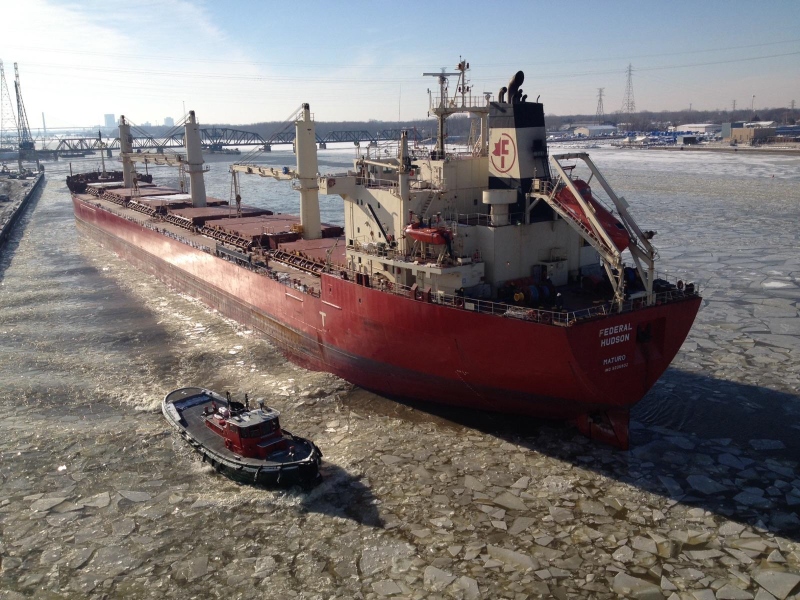The Coast Guard was justified in raising Great Lakes pilots’ rates especially to deal with recruitment, retention and safety issues, a federal judge has found. But the exact amount of that raise and the formula used to compute it still need to be hashed out.
The decision last week by U.S. District Judge Rudolph Contreras, of the District of Columbia, comes in a suit by ports and shippers against the Coast Guard seeking a 2016 rate reduction of at least 20.6%, arguing the agency’s calculations were flawed and the increases arbitrary and capricious. The Coast Guard set the average annual pilot compensation at $326,000, up from $235,000 and recommended more pilots and up to 10 days off a month. Pilots associations joined the suit on the Coast Guard side.
The number of Great Lakes pilots dropped 22% from 2007 to 2014, and the Coast Guard suggested that problems keeping pilots were at least partly due to pay levels. More pilots were needed to deal with fatigue. The judge found “no basis to overrule the Coast Guard’s considered judgment as to pilot recruitment and retention.”
“Overall, it’s a very good outcome,” said Capt. George Haynes, vice president of the Lakes Pilots Association. While the pilots work a nine-month rather than year-round season, “we do have long hours, difficult routes and tricky areas to navigate.” Since the increase, “we’ve increased our manning levels significantly.”
The judge did challenge how the Coast Guard decided on a 10% increase. The agency used Canadian pilots as a point of comparison. However, those pilots are government employees guaranteed minimum pay as well as retirement, healthcare and vacation benefits and limited professional liability. Based on those differences, the Coast Guard recommended the 10% hike.
But the shippers argued the number “was not the result of reasoned decision-making,” and the judge agreed. The Coast Guard “gave no rational explanation for its adoption of a ten-percent increase to pilotage rates,” he said, so its decision was arbitrary and capricious.
The Coast Guard establishes rates for Great Lakes pilots while rates elsewhere in the country are set at the local level. The rates must be reviewed annually.
Another outstanding issue is the weighting factor, a metric favored by shippers and ports that yields higher pilotage fees for larger ships than smaller ones. The Coast Guard used the factor in its 2017 rates for the first time, so the agency and pilots argued that this year’s rule moots the need to deal with the factor in the 2016 case. Shippers disagreed. And the judge faulted the Coast Guard for failing to consider the factor’s impact in its rate-making.
The weighting factor “probably for us was the most blatant defect in the 2016 methodology,” said Jonathan Benner, with the law firm Thompson Coburn, who represents the ports and shippers. They were “very pleased that [the judge] understood the fundamental points we were making about certain of the methodological issues that arose in the 2016 rulemaking.”
“On the big issues, we were very happy with the ruling,” said John Longstreth, with the firm K&L Gates, lawyer for the pilots. They think the increase should be more than 10 percent.
The judge gave both sides two weeks to submit a schedule for resolving the open questions.





